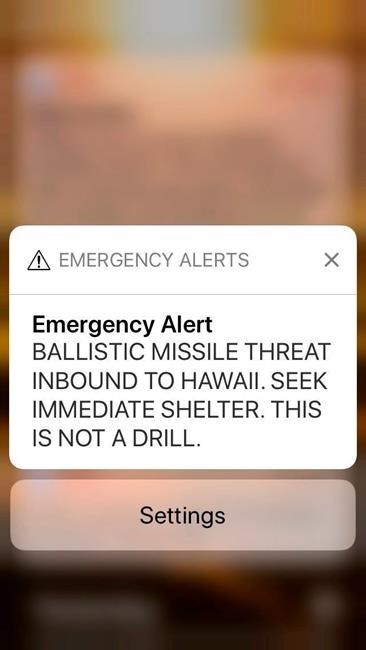
FILE - This Jan. 13, 2018 file smartphone screen capture shows a false incoming ballistic missile emergency alert sent from the Hawaii Emergency Management Agency system. The missile alert Hawaii mistakenly sent to the public has promoted the Federal Communications Commission to recommend government workers avoid using the phrase "this is not a drill" during practice sending emergency notices. The FCC included the advice Tuesday, April 10, 2018, in its final report on what went wrong when Hawaii in January accidentally warned a ballistic missile was about to hit the islands. (AP Photo/Caleb Jones, file)
Republished April 10, 2018 - 5:14 PM
Original Publication Date April 10, 2018 - 4:11 PM
HONOLULU - The missile alert Hawaii mistakenly sent to the public in January prompted the Federal Communications Commission on Tuesday to recommend that government workers avoid using the phrase "this is not a drill" during practice sending emergency notices.
The FCC included the advice in its final report on what went wrong when Hawaii accidentally warned a ballistic missile was about to hit the islands.
A Hawaii Emergency Management Agency employee sent the alert to cellphones and broadcasters during an exercise. He thought it was a real emergency but other workers understood it was an exercise.
The report said a supervisor played a recorded script that included the phrase "this is not a drill" and that deviated from procedure. The recording blended wording from a standard drill and phrases from a message that would be sent to broadcasters during a real attack.
The commission said language used in actual emergencies should be clearly distinguishable from tests.
The report also recommended limiting the ability of employees to create and modify drill messages.
Agencies should have a plan to use social media as another means of communicating with the public alongside standard cellphone and broadcast alerts, the commission said.
In January, the Hawaii agency did not use Twitter and Facebook to inform the public about the error until 13 minutes and 16 minutes after the alert was sent.
The report highlighted a misunderstanding between supervisors at the Hawaii agency as one more reason for the mistake.
The midnight shift supervisor decided to run the drill with just a few minutes notice as the day shift was starting work. But the day shift supervisor did not realize the midnight shift supervisor planned to conduct the exercise with day shift officers. The day shift supervisor wasn't present to supervise the drill.
Other emergency management agencies the commission interviewed said conducting a drill without proper supervision "would not be tolerated."
The agency conducted drills at a rate that far exceeds the norm for emergency management agencies, the commission said. In the eight days leading up to the Jan. 13 test, it conducted ballistic missile drills six times. The frequent tests combined with lack of proper safeguards made a false alert more likely to occur, the commission concluded.
The report mentioned previously reported problems as contributing factors — including a lack of a plan for correcting a false alert and the agency's failure to require a second warning officer to confirm an alert before it is sent.
News from © The Associated Press, 2018